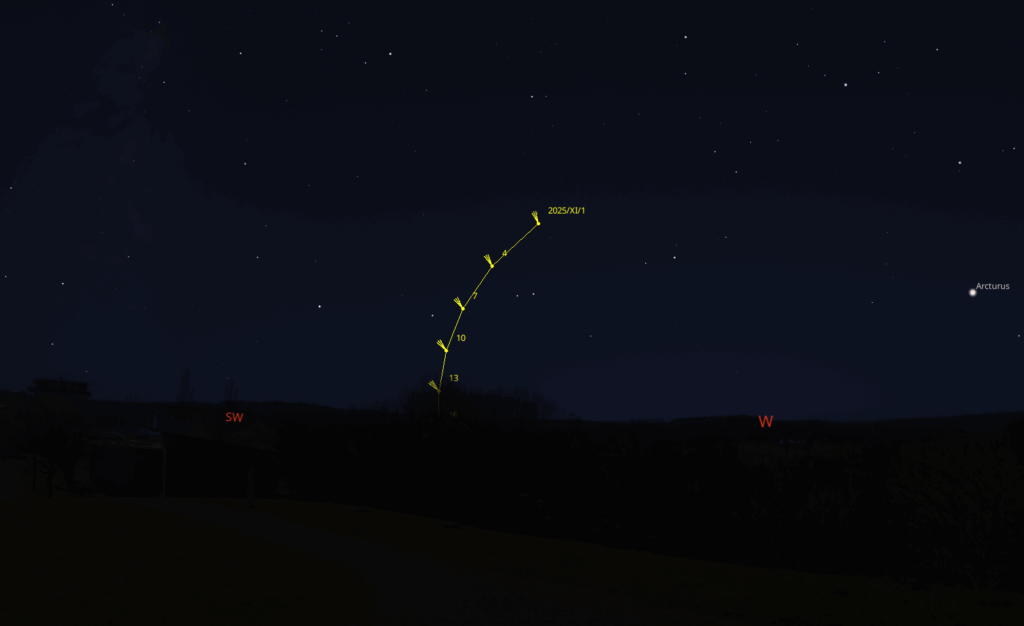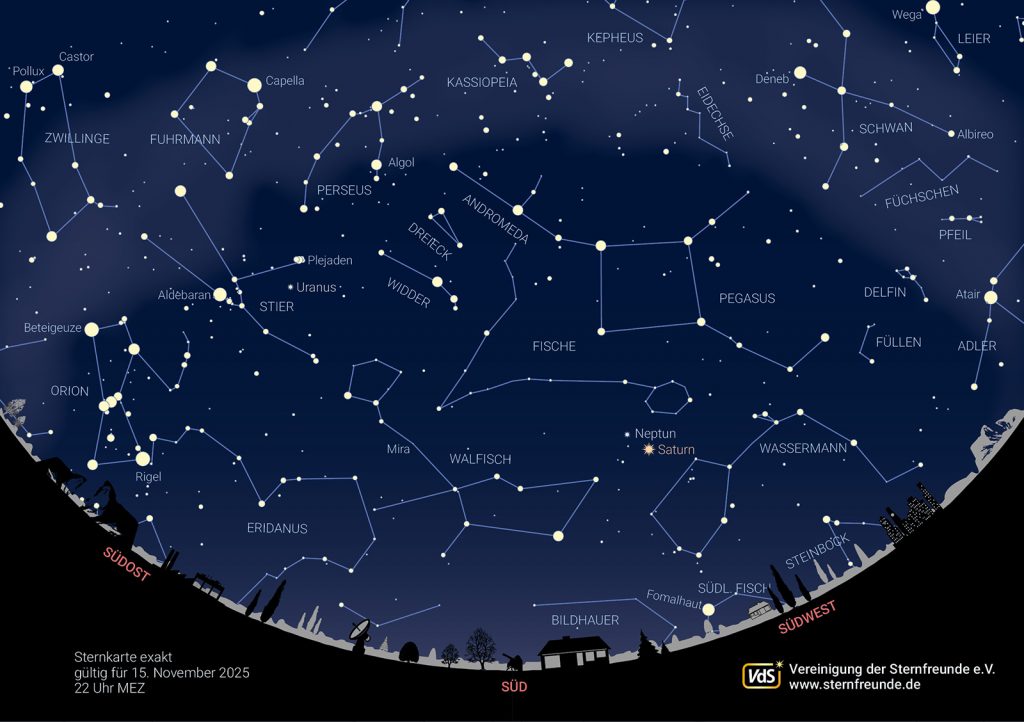The starry sky in November 2025
From November up to and including February, the observatory opens at 19:00, provided the night sky is clear.
The typical constellations of the autumn starry sky are the large constellation Pegasus, with the upper left corner already belonging to Andromeda; the square of Pegasus is also known as the autumn square. Below Pegasus and Andromeda, only constellations with faint stars can be seen: Aquarius in the southwest, Whale in the south and Pisces above.
In the east, the constellations of the winter sky are already rising with much brighter stars: Cassiopeia (the „celestial W“) is rising vertically above us, followed towards the south-eastern horizon by Perseus (with the variable star Algol) and Taurus with the striking star cluster of the Pleiades and the reddish star Aldebaran. The constellation Orion, known from Greek mythology, has just risen with its seven very bright stars.
The moon phases in November 2025

Comet C/2025 A6 Lemon
With a bit of luck, the comet Lemon can be observed in the evening. The following viewing guide shows the view from the observatory hill towards the west-southwest, at 18:30, starting on November 1 in three-day increments. Binoculars will probably be required.

The planets in November 2025
Mercury can be seen in the morning sky at the end of November. The best visibility is achieved at the beginning of December. From 6:30 a.m., the planet close to the sun can be found for a good half hour above the south-eastern horizon.
Venus ends its time as a morning star, at the end of November it only rises during twilight.
Mars is still not represented in the night sky.
Jupiter in Gemini heralds the start of its opposition period - the best observation time for the giant planet has begun. On November 10, the moon appears to pass by it on its monthly orbit.
Saturn in Aquarius, on the other hand, has just completed its opposition period. Nevertheless, it is worth taking a look with a telescope, as the ring is particularly narrow at the moment.
Uranus in Taurus is at opposition on November 21 and has therefore reached its best visibility. With a brightness of 5.6 mag, Uranus can even be seen with the naked eye in very dark skies (and with a good star chart).
Neptune in the fish can be observed in the first half of the night.
In modified form from: The starry sky in November 2025 - Association of Star Friends e.V.

